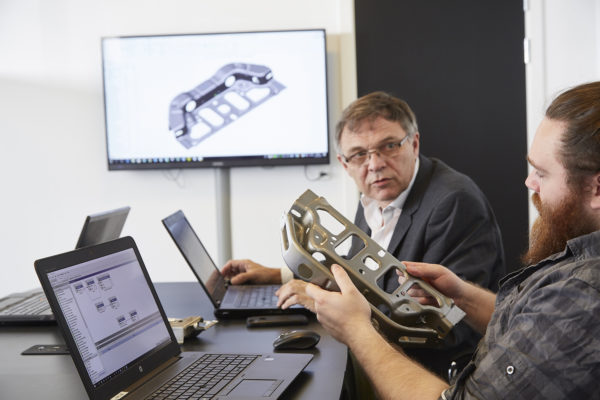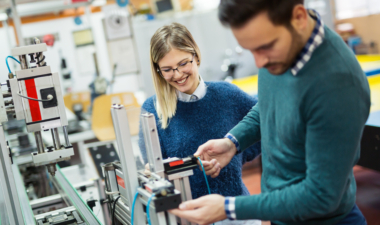
FRECON sees great and valuable potential in casted steel components
Casted steel components are an ancient technique that has been refined for many decades. Today, the method is an overlooked, competitive alternative to welded or CNC machined structures. FRECON finds that many customers are not aware of the possibilities with casted components and have a perception that it is a very expensive and complicated solution.
FRECON has extensive experience with casted components, which offer a high level of detail, minimal processing and great strength at a competitive price.
“Therefore, we talk to our customers about the possibilities and of course the limitations of casted components when relevant,” says Partner & Senior Solution Engineer, Frederik Rytter from FRECON.
Widespread applicability
The applicability of casted components ranges widely. FRECON has extensive experience with casted components in the tool industry, components for transporting heavy goods, lifting equipment, bearing housings for large engines and items for test rigs in the wind turbine industry.
“In addition, casted components can be used for more everyday elements such as pillars for bus sheds and lattice knots for buildings. Back in time, entire facades were casted for buildings and streetlights. Maybe we will see this again sometime in the future,” says Frederik Rytter.
Stronger components at competitive prices
Casted components can often be designed to be significantly stronger than traditional, welded items and especially in terms of fatigue strength. At the same time, casting is a very competitive method, which does not require a high number of units in order to get started. At FRECON, you even see prototypes being made as casted components.

Handling of advanced geometry
The design of casted items is based on a great deal of experience in handling of advanced geometry.
“The casted item must, as a starting point, have an organic design without any jumps in stiffness, as this provides the lightest and strongest design,” says Frederik Rytter.
Casting makes it possible to build many interfaces and functions into the item, thereby reducing the total number of components in a construction.
Extensive knowledge of design of fragile items
At FRECON, a great deal of knowledge has been gathered in the field over many years.
“Our work involves full integration between design and calculation,” says Frederik Rytter and continues:
“Thus, we design and calculate where an item can be optimized, e.g. by making it thinner, thicker or applying alternative geometry in selected areas in order to live up to tolerances and breaking strength. We also work with optimization of the weight of the item, when essential for the customer.”
A fully informed decision
FRECON’s engineers deal with many details in working with casted components. At the same time, partners are involved in the process, such as the cast manufacturer and the foundry, in order to achieve the right result.
The crucial part for FRECON is that the customers make a fully informed decision about their design. That way, they get the best from several “worlds”, and end up with the most valuable solution for their particular project.

